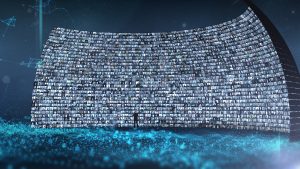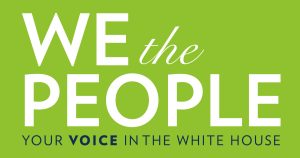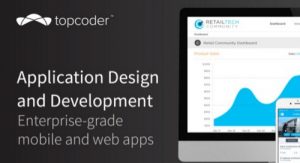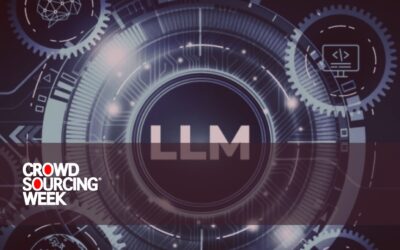In recent weeks, as Trump has assumed his position as the President of the United States, the differences between himself and the Obama administration have become clearer. Despite all odds, however, there is one area common to both administrations that is set to continue; crowdsourcing usage for federal agencies. Crowdsourcing has received support from both the General Services Administration as well as the White House itself.
 Power of Crowds – On most crowdsourcing platforms, a group of individuals will come together in an online arena so that questions and challenges can be discussed. Normally, the crowd will then solve these common problems and provide detailed answers using their expertise and knowledge. See here how CSW defines crowdsourcing.
Power of Crowds – On most crowdsourcing platforms, a group of individuals will come together in an online arena so that questions and challenges can be discussed. Normally, the crowd will then solve these common problems and provide detailed answers using their expertise and knowledge. See here how CSW defines crowdsourcing.
In terms of strategic analysis, we have already seen a force multiplier come from equipping large crowds with an analytical ‘toolbox’ of sorts. For example, this could be through easy-to-use software where there is enough power to see a valuable outcome; for the most part, this can be seen on social media with analytics and filtering but also with big data analytics and consequent sentiment analysis.
 Furthermore, another example would be the accessibility of unique information – information that is not in the common knowledge pool; in this area, it may rely on mobile access as well as dashboards that update in real-time. With this in place, it will be quick and easy to see which areas are covered well and which are lacking. All things considered, it seems that intellectual creativity is the main motivation for those who participate within crowdsourcing communities. When the necessary tools and information are available, results can be startling. A case in point: A look back ‘We the People Petitions’.
Furthermore, another example would be the accessibility of unique information – information that is not in the common knowledge pool; in this area, it may rely on mobile access as well as dashboards that update in real-time. With this in place, it will be quick and easy to see which areas are covered well and which are lacking. All things considered, it seems that intellectual creativity is the main motivation for those who participate within crowdsourcing communities. When the necessary tools and information are available, results can be startling. A case in point: A look back ‘We the People Petitions’.
The Analysts – Over the years, we have learned that the size of the crowd is not the most important factor when crowdsourcing complex forecasts. Because there is a subjectivity involved, the need for second-tier analysis increases. Instead of focusing on what the crowd is saying, there needs to be an adjustment to also work out who is saying it as well as why it is being said. Then, differing amounts of importance are given to contributors depending on their purpose. In some scenarios, different group types may all be considered equal in comparison of opinions.
With this in mind, I believe that crowdsourcing managers will soon want access to discourse analysis. After this, extra layers of insights will be necessary for the results of each exercise to be more precise. Known as ‘big knowledge’, this is where the insights that come from various analysts are, themselves, analyzed.
Crowdsourced Support for the Full Analytical Suite – When you look at the majority of crowdsourced analysis, you see that it’s done on a strategic level. Considering the worldwide demand for innovation, we are now witnessing a switch to more tactical and technological levels. For example, an app being developed on Topcoder.
 When this change happens, it means that companies within the crowdsourcing industry will need to adjust their services for holistic solutions – often, clients’ questions require multiple-layer answers from strategy all the way through to execution. Within the industry itself, there could also be a ‘narrowing’ effect where the smaller merge with the larger as a means of cooperation as well as survival. In 2017 we should all expect to see news of acquisitions and mergers.
When this change happens, it means that companies within the crowdsourcing industry will need to adjust their services for holistic solutions – often, clients’ questions require multiple-layer answers from strategy all the way through to execution. Within the industry itself, there could also be a ‘narrowing’ effect where the smaller merge with the larger as a means of cooperation as well as survival. In 2017 we should all expect to see news of acquisitions and mergers.
Departments for Crowdsourcing – When it comes to strategic planning, execution, and decision making, crowdsourcing is becoming more and more important each year. Despite this, there isn’t yet a great deal of familiarity between clients and the crowdsourcing platforms. While this may not seem very necessary to begin with, it means that, eventually, the client’s needs may not be met – and a gap will develop that becomes harder to close as technology advances.
Recently, some companies have actually taken steps to address this and have appointed an ombudsman who acts as a representative of the client’s interests. Although this shows that the need has been understood, it’s still not enough. Since crowdsourcing is a complex industry with a need for incentives, analytic methodologies, and community management, each company may have different crowdsourced solutions that could baffle customers unless the time is taken to explain it to them carefully and simply.
If success is to be seen and interactions are to occur in an efficient manner, I believe that specific crowdsourcing departments are needed just as much as strategy or research departments. Their extensive knowledge of the topic makes them aware of the best platforms, vendors, and how specific needs can be met. When a department of this type is in place, their initiatives can be grouped with planning, execution, and decision-making in other departments
Summary – In order to become more useful, the crowdsourcing industry must continue to make progress in 2017. As well as understanding the needs of the client, there must also be an availability of tools and methods in place so clients and crowdsourcing platforms can work in harmony.




0 Comments